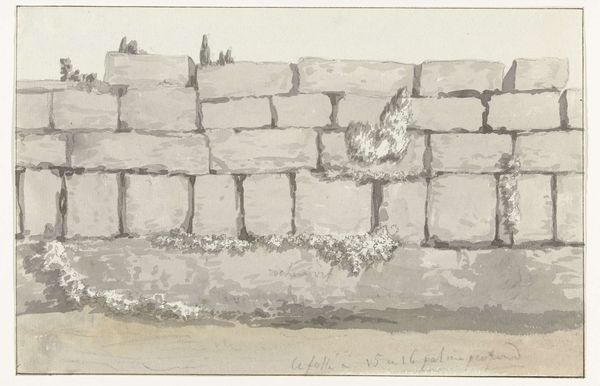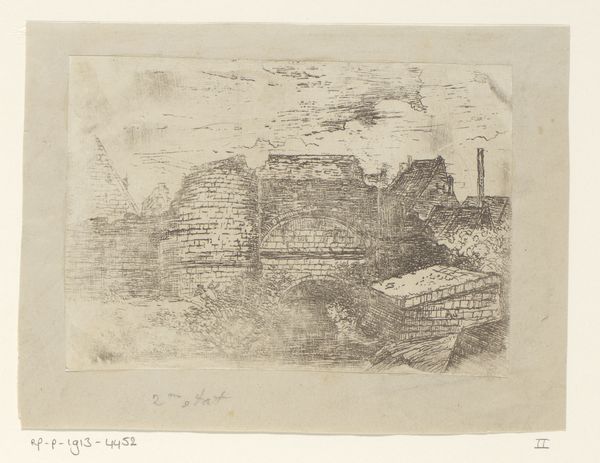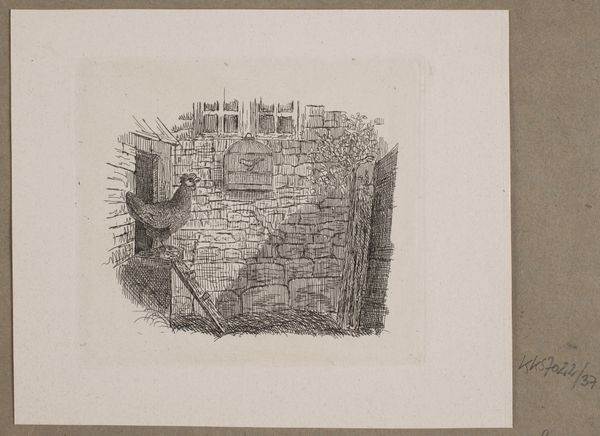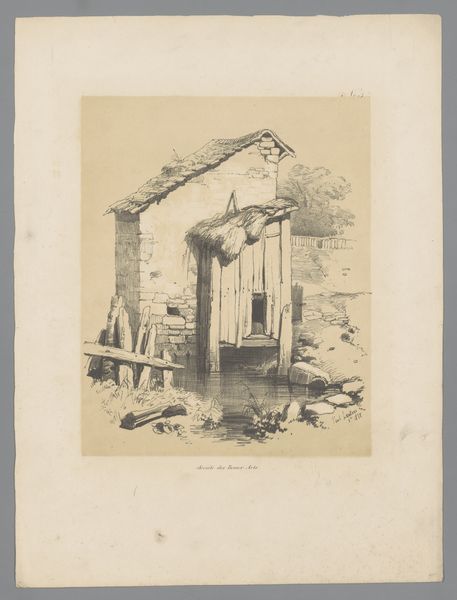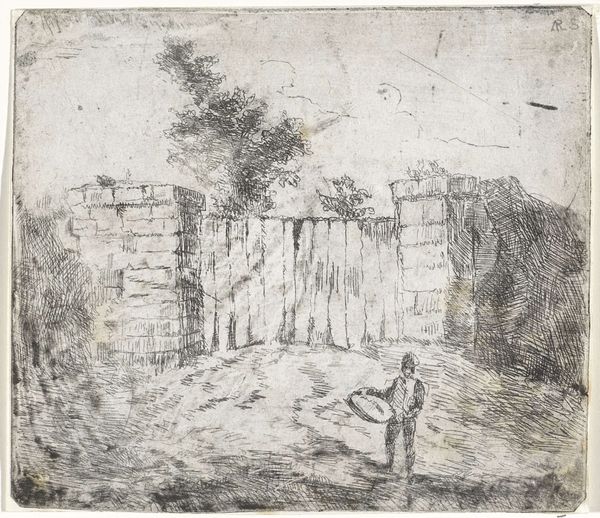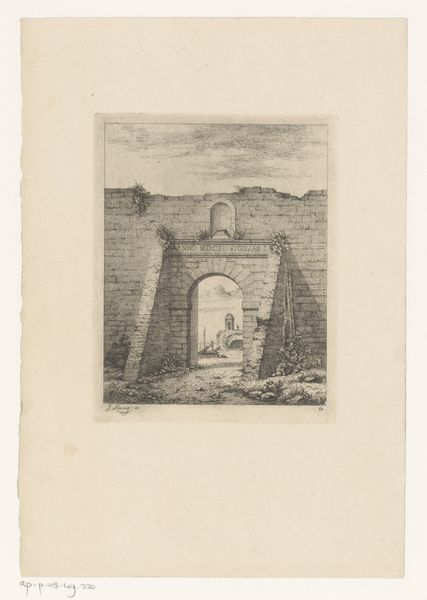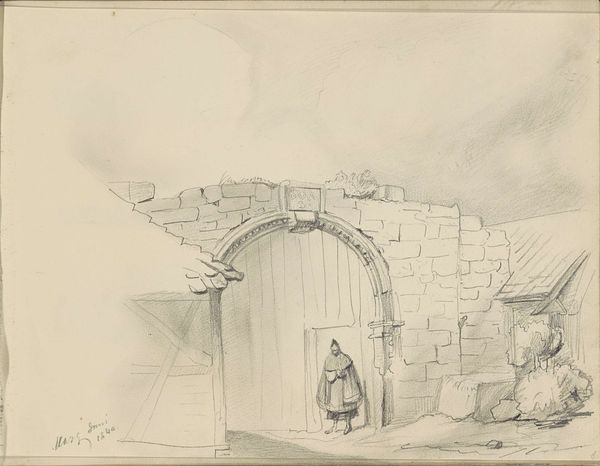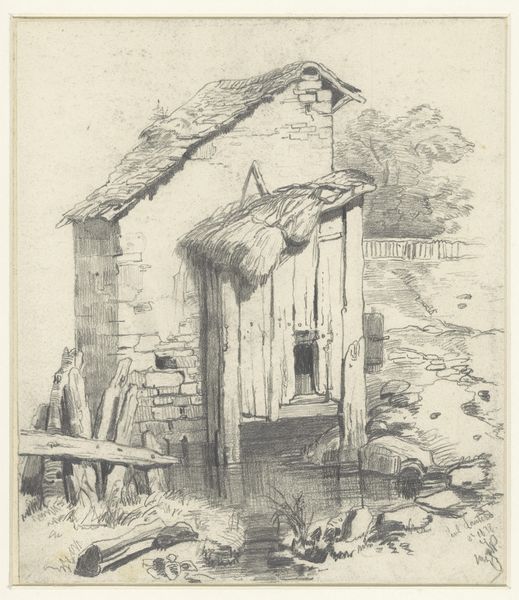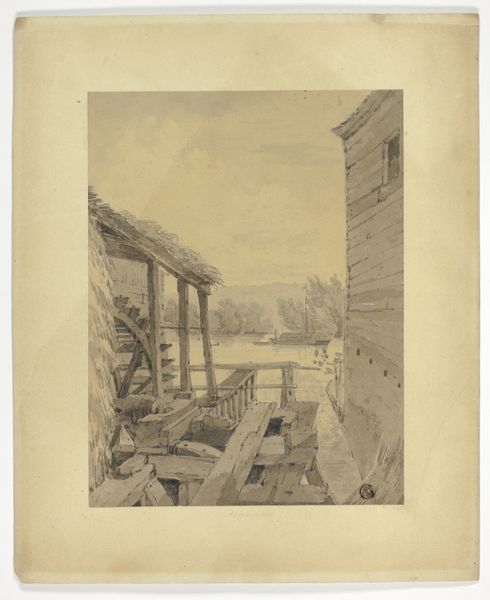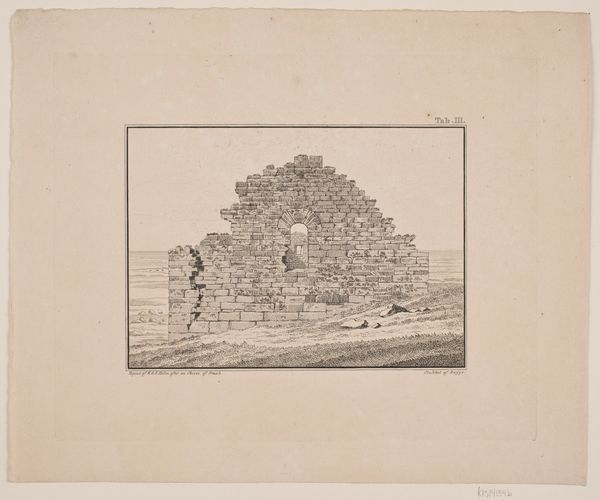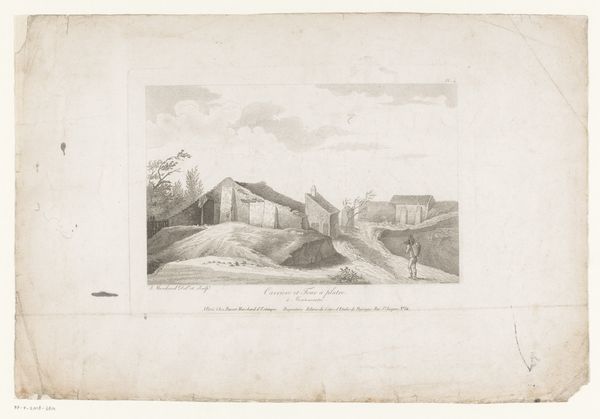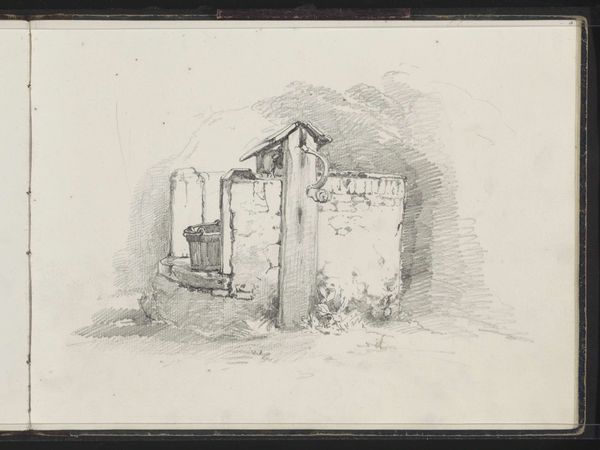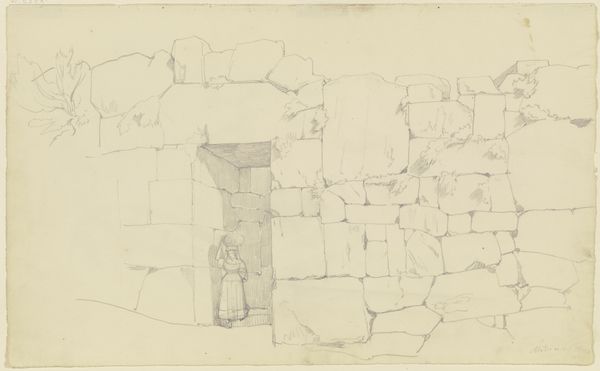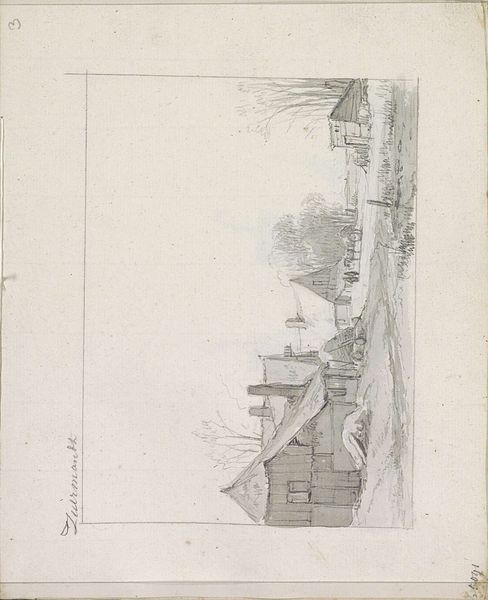
Dimensions: height 150 mm, width 205 mm
Copyright: Rijks Museum: Open Domain
Curator: This somber watercolor drawing by Louis Ducros is titled "Ruins of a Terrace of the Temple of Venus Erycina," created in 1778. The piece currently resides here at the Rijksmuseum. Editor: The muted greys and whites certainly convey a sense of melancholy, and there's something quite stark about the subject being reduced to just the ruined brickwork. I'm immediately struck by the suggestion of lost grandeur and a subtle critique of power. Curator: I'm interested in the layers of cultural meaning embedded within. The Temple of Venus Erycina was a significant site in ancient Sicily, associated with fertility, love, and even cross-cultural exchange between Greek and Punic traditions. Ducros, working within a late neoclassical and early romantic framework, is making a statement by focusing on the ruin. Editor: Absolutely. These ruins serve as potent symbols. The crumbling architecture suggests a cyclical nature to empires and societal norms, speaking perhaps to the fleeting nature of societal structures and even the constructs surrounding gender and power symbolized by Venus. Curator: Exactly! By the late 18th century, viewing the remnants of ancient civilizations provided an entry point to contemplate present-day issues. This ruin would serve as an invitation for discourse on political corruption, the subjugation of marginalized groups, and a way to advocate for more inclusive narratives that recognized complex power dynamics. Editor: And the image, though seemingly simple, provides layers for interpreting history. Brick by brick, one could analyze not only the physical structure but the societal one it supported. It prompts reflections on both material culture and historical context. Curator: It's as if the visual of the ruins is designed to encourage dialogue around contemporary concerns, viewed through the prism of historical memory. It pushes for change. Editor: In its own way, through shades and suggestion, Ducros' drawing becomes a statement against impermanence. There is much in it that causes deep thinking. Curator: The echoes of the past become active agents within the present. A beautiful and powerful approach.
Comments
No comments
Be the first to comment and join the conversation on the ultimate creative platform.
